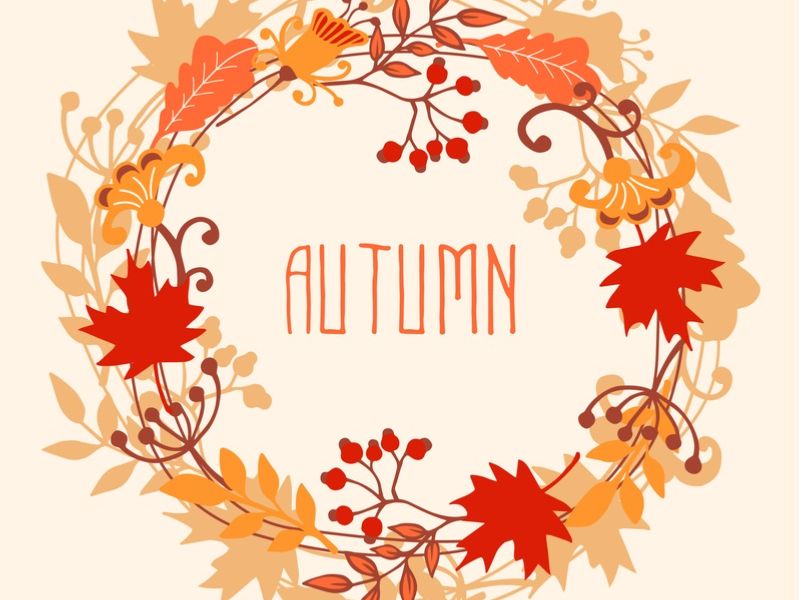Product Information: Make Sure Belongings Make It There And Back Again All Year Long

Stikins ® name labels keep all sorts of things safely and securely labelled so your children’s belongings will always make it there and back again. From home to school and home again, not to mention every day trips and adventures beyond the shires and the misty mountains cold…
Stikins ® Name Labels – Celebrating Hobbit Day & The Autumn Equinox
This weekend contains both Hobbit Day and the Autumn Equinox. Hobbit Day celebrates the work of JRR Tolkien, as two of his characters (hobbits Frodo and Bilbo Baggins) share the birthday of 22nd September. The Autumn Equinox takes place this year on 23rd September and traditionally marks the transition from summer into autumn. So, we’re celebrating both events with a few facts about hobbits, autumns – and the names given to both…
Name Labels Presents – Facts About Hobbits
According to Tolkien, Hobbit means “hole-builder”. Hobbits are between 2-4 feet tall (61 – 122cm), with the average height being 3 feet, 6 inches (107cm). They live for an average of 100 years. Hobbits have slightly pointed ears and their feet are covered with curly hair and have leathery soles – so they rarely wear shoes! They dress in bright colours – especially yellow and green. They are excellent at throwing stones and, while usually shy, are capable of acts of great courage.
There are over 200 hobbit names in The Hobbit and The Lord Of The Rings trilogy. Amongst our Stikins ® name labels customers, the following “hobbit names” have proved most popular:
Lily, Ruby, Poppy, Daisy, Will, Hugo, Rose, Ted, Ivy, Milo, Laura, Rufus, May, and Rowan.
Of the hobbit family surnames used by Tolkien, the following were most popular among our customers:
Gardner, Banks, Townsend, Hayward, Fairbairn, Cotton, Rumble, and Burrows.
Sadly, we haven’t been asked to print name labels for a Frodo or a Bilbo yet (or even any Bagginses)…
Name Labels Presents – Facts About Autumn
We used to call Autumn “Harvest”; a Germanic word that referred to the harvesting of crops, the month of August, and the season. Many countries with Germanic languages still use words meaning harvest to refer to autumn – including herfst (Dutch), Herbst (German), and hairst (Scots).
As people moved into towns and away from farming the land, the harvest became a less dominant marker in the year. By the 16th century, two terms were competing to be the new name for the season…
Fall: with Germanic roots, this term was a contraction of the expressions “fall of the leaf” and “fall of the year” – which referred to the autumn season. English settlers took this term to America, where it remains the most popular term.
Autumn: arriving out of autumnus (Latin) and automne (French), autumn is the most popular term in the UK.
In the North of England and Scotland, autumn was often called backend; referring to its position at the end of summer and the start of the second half of the year – compared to the first half or “front” of the year.
In autumn, leaves change colour as different pigments become more predominant in their cells. Leaves are usually green because they are full of chlorophyll, the green pigment that absorbs sunlight for photosynthesis. The green colour of chlorophyll obscures the colours of other pigments.
In autumn, colder temperatures, shorter days, and weaker sunlight indicate that winter is coming (when there won’t be enough sunlight for photosynthesis) – so plants stop producing chlorophyll.
Other pigments become the dominant contributors to leaf colour. These include carotenoids, which create yellow colours. They are actually present all year round but are only visible once the level of chlorophyll decreases. Carotenoid pigments also contribute to the colouring of carrots, corn, canaries, daffodils, egg yolks, buttercups, and bananas.
Red and purple colours are the result of anthocyanins, which plants begin to produce in late summer. These pigments are also found in blueberries, cranberries, raspberries, blackberries, cherries, red cabbage, and in the petals of many plants.
The combination of carotenoids and anthocyanins creates orange colours in autumn leaves.
Autumn is the second most popular seasonal name among our customers – fittingly coming in just behind Summer and ahead of Winter.
Stikins ® Name Labels – Stick On Labels For All Of Your Autumn Adventures
While Stikins ® labels can come in handy all year round, autumn is the perfect time to top up your stash to get all of your winter warmers safely and securely labelled in preparation for the colder (and wetter) weather that’s on its way.
Stikins ® clothes labels can be used to label all sorts of clothing; including hats, gloves, scarves, ear-muffs, and coats. You can also use them in shoes to make sure that your children keep track of their winter boots and wellingtons. They’re also perfect for labelling autumn accessories – from a trusty thermos to an ever-useful umbrella.
When labelling clothing, you should always apply your name labels onto the wash-care label. In shoes, we recommend applying your name labels to the side wall or beneath the tongue. You need to avoid applying them directly beneath the foot (especially the heel) where friction during movement will cause the print to wear away. To use your name labels on any other items, simply stick your name labels directly onto the surface and smooth them down firmly to ensure a successful adhesive bond.
Order Stikins ® Name Labels Today
Our name labels can be ordered anytime by visiting www.stikins.co.uk. Alternatively, give us a call to order by phone; our Customer Service Team is available 9am-5pm, Monday to Friday.
We make and despatch name labels every day (Monday to Friday) up to 3pm. Our standard delivery service uses Royal Mail’s first class service. Around 93% of this service arrives the next (working) day but it can take up to five working days to arrive.
